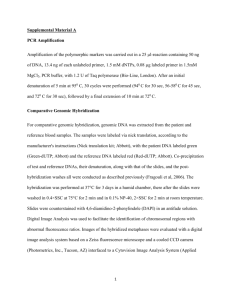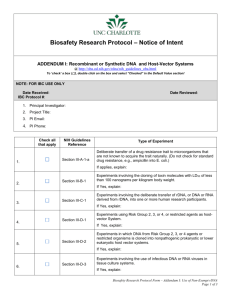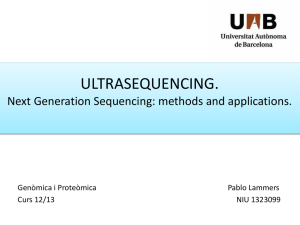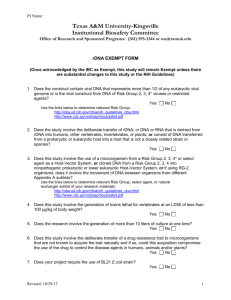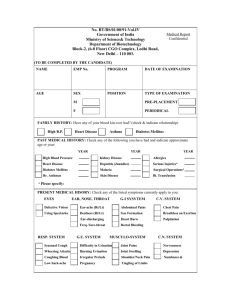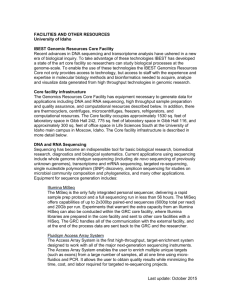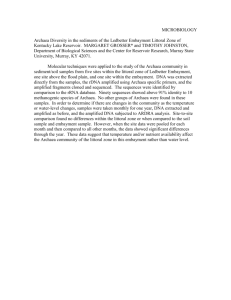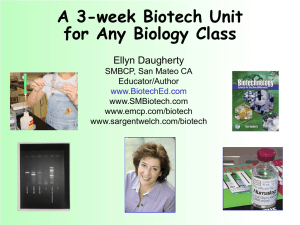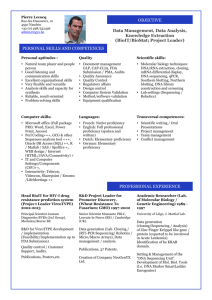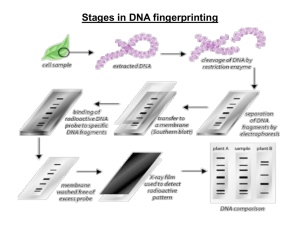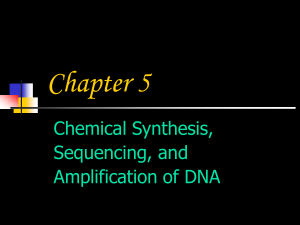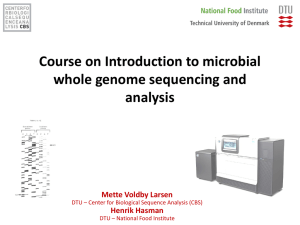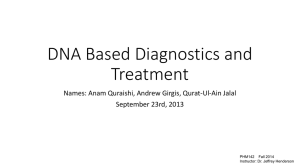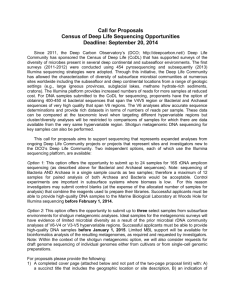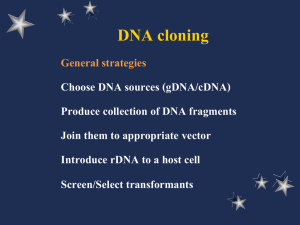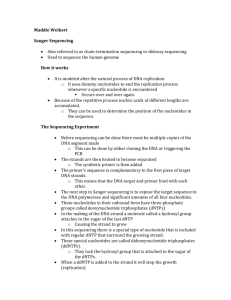Shigella
advertisement
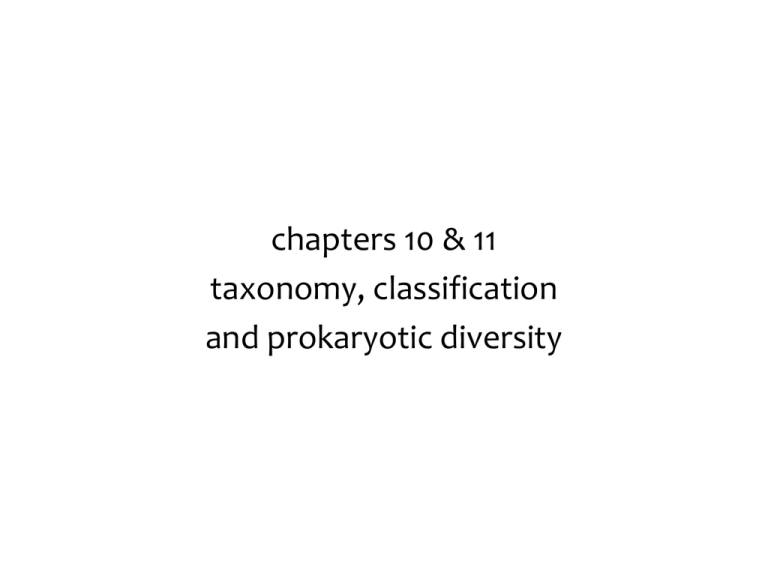
chapters 10 & 11 taxonomy, classification and prokaryotic diversity organism grouping identification – binomial nomenclature classification – organism similarity identification: morphology & biochemical testing differential staining & physiology (bacterial enzymes) Gram negative bacillus lactose fermenter lactose nonfermenter decarboxylates lysine produces hydrogen sulfide citrate utilization Shigella Salmonella Escherichia no citrate utilization butanediol fermentation no butanediol fermentation Enterobacter Citrobacter identification: serology • Ab/Ag interaction – slide agglutination – ELISA identification: blots western (immuno-)blot • protein gel • antibody probes seroconversion with HIV antibodies confirmation of plasmid transformation identification: flow cytometry laser “reads” single cells • interspecies differences – conductivity – fluorescence • Ab-stained cells classification & identification: genetic analysis • DNA base composition • ribosomal DNA (rDNA) sequencing • DNA fingerprinting • DNA-DNA hybridization classification: hydrogen bonds & %GC experimentally derived 1. denature DNA 2. read abs. @ 260nm 3. abs of 1× >> 2× from DNA/RNA sequence classification: NA sequencing Identification & classification: sequencing identification: RFLPs classification: nucleic acid hybridization Method Classification Identification morphology no yes staining yes (Gram) yes biochemical testing no yes serology no yes flow cytometry no yes NA hybridization yes (yes) %GC yes no DNA fingerprinting no yes rRNA/rDNA sequencing yes yes Chapter 10 Learning Objectives 1. Define and differentiate taxonomy, phylogeny, identification and classification. 2. Categorize each of the following in terms of the classification and identification of bacteria: morphology, differential staining, biochemical testing, western blot, serology, ELISA, flow cytometry, DNA fingerprinting, %GC analysis, rDNA (rRNA) sequencing, DNA-DNA hybridization. Know why each does or doesn’t work for classification and/or identification. 3. If given the percent similarities for a group of organisms and a blank phylogenetic tree, be able to place the 4 organisms appropriately onto the tree. 4. How has rDNA sequencing and the work of Carl Woese changed the way organisms are categorized based on their similarities? 5. How do RFLPs allow for the identification of unknown bacteria? chapter 11: domains Bacteria & Archaea the prokaryotes: domains Bacteria and Archaea Domain Archaea Korarchaeota • ___________________ – Pyrodictium – Sulfolobus Euryarchaeota • ___________________ – Methanobacterium • ___________________ – Halobacterium Crenarchaeota • ___________________ • ___________________ microbial diversity • habitat variety – ___________________ – ___________________ – ___________________ – ___________________ – ___________________ • _________________________________________________________ • metabolize highly unique substances • integral to many ___________________ cycles • nutrient “fixing” into organic molecules • in situ PCR – >billions of bacteria/gm of soil – 30-50% of aquatic plankton are Archaea – 5000 non-eukaryotic formally described (cf. 1/2 million insects) Chapter 11 Learning Objectives 1. What are the general characteristics shared by all prokaryotes? 2. In general, what can be said about the habitats of Archaea? 3. What roles do prokaryotes play in the environment? Where do they live, what do they contribute to the biosphere? 4. What has in situ PCR told us about microbial diversity?


